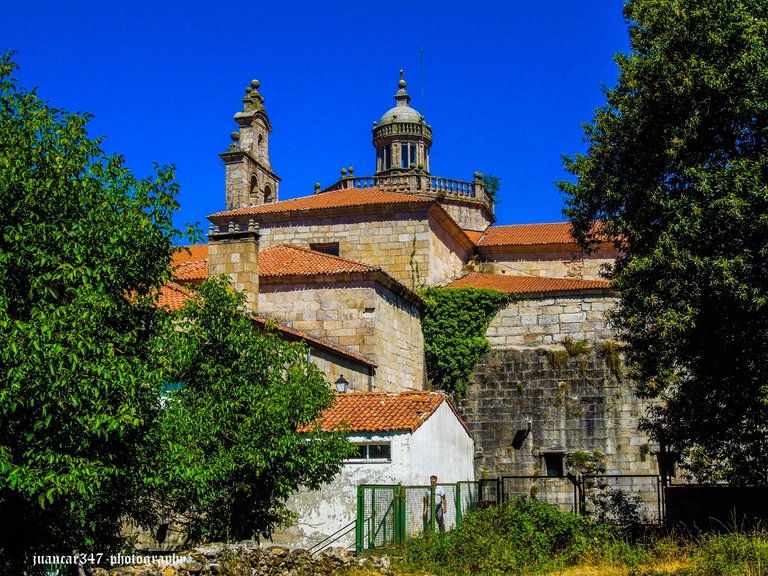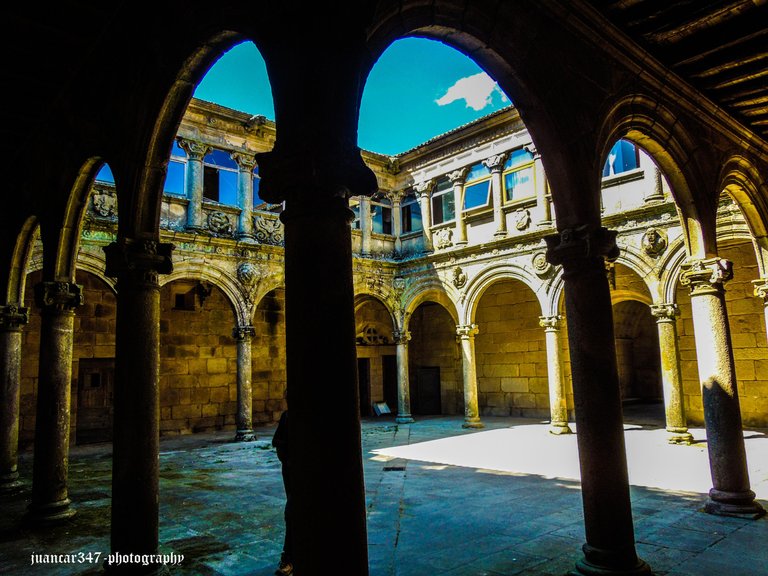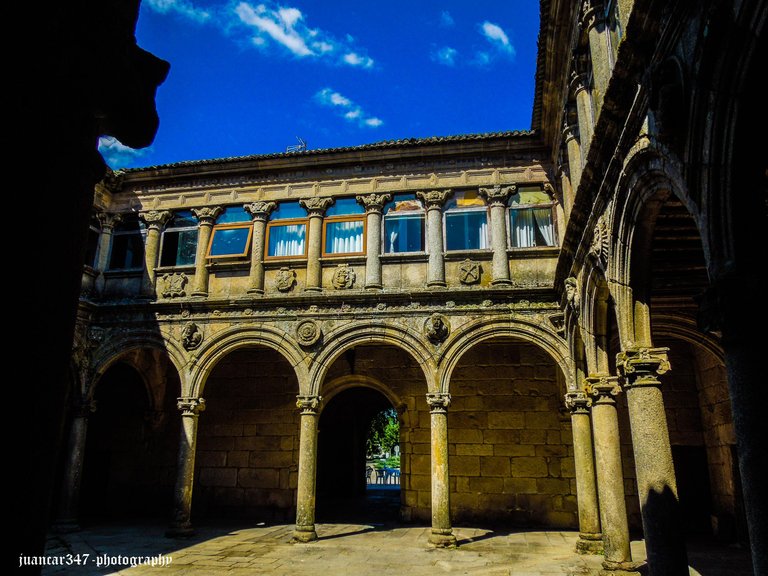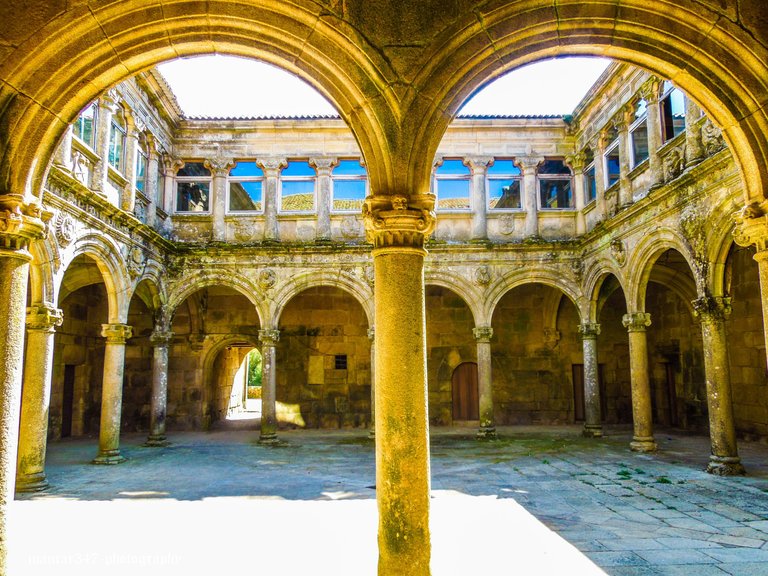
Of eminently Romanesque origin and Benedictine craftsmen, whose presence is confirmed with remarkable persistence on both sides of that venerable natural accident that affects two Galician communities of peculiar charm, such as Lugo and Orense, and which, known as Ribera Sacra - Rovoira Sacrata, if we take into account the old medieval nomenclature, attends, with all the force of its marvelous visual force, the venerable union of two important rivers, such as the Sil and the Miño, the old monastery of Saint Mary of Montederramo, Like so many others of the same origin and style, he has also witnessed that impassive effect of transformation that, over time, has made man's thought and professionalism an irremediably passive subject, tempted, in many ways. occasions, due to the not very subtle consideration of fashions or trends related to the time.

This becomes more evident, above all, when the initial enthusiasm of the visitor, who enters a church that still preserves much of its original essence, is abruptly cut short, when he enters the cloister and realizes, visibly disappointed, that the metaphorical Edenic garden, original and Romanesque - that, eternally populated by the no less metaphorical presence of some archetypes, which, in addition, it is to be expected that they also included those ridiculous monsters that the charismatic Abbot of Citeaux, Bernard of Clairvaux, so detested - It was replaced, during and after the period of reign of the most Catholic of the kings, Philip II, by another cloister, much more austere, whose style, the Herreriano - in honor of the architect of the Cantabrian Trasmiera, Juan de Herrera, among whose curriculum, includes that important monastery, which, according to legends, exorcises a 'well of Hell', which is none other than that of San Lorenzo de El Escorial, echoing that melancholic poem, where that inveterate poet of the taverns of the roads, François Villon - I wonder, perhaps, Antonio Machado didn't also think about him, when he created that poem that Serrat elevated to the category of song and that said: guitar from the inn, that today you play jotas and tomorrow peteneras - he wondered , in relation to the passage of time and the inevitable loss of things, where the snows of yesteryear went.

De cuna eminentemente románica y artífices benedictinos, cuya presencia se constata con notable persistencia a uno y otro lado de ese venerable accidente natural que afecta a dos comunidades gallegas de peculiar encanto, como son, Lugo y Orense, y que, conocido como Ribera Sacra -Rovoira Sacrata, si tenemos en cuenta la antigua nomenclatura medieval- asiste, con toda la fuerza de su portentosa fuerza visual, a la venerable unión de dos importantes ríos, como son el Sil y el Miño, el viejo cenobio de Santa María de Montederramo, como tantos otros de su mismo origen y estilo, ha sido testigo, también, de ese impasible efecto de transformación, que, a lo largo del tiempo, ha hecho, del pensamiento y la profesionalidad del hombre, sujeto irremediablemente pasivo, tentado, en muchas ocasiones, por la poco sutil consideración de las modas o tendencias afines a la época.

Esto se hace más evidente, sobre todo, cuando el entusiasmo inicial del visitante, que penetra en una iglesia que todavía conserva buena parte de su esencia original, se ve bruscamente truncado, cuando accede al claustro y se percata, visiblemente decepcionado, de que el metafórico jardín edénico, original y románico -aquél, eternamente poblado por la no menos metafórica presencia de unos arquetipos, que, además, cabe esperar que incluyeran, también, a esos ridículos monstruos que tanto detestaba el carismático Abad de Citeaux, Bernardo de Claraval- fue sustituido, durante y con posterioridad al periodo de reinado del más católico de los reyes, Felipe II, por otro claustro, mucho más austero, cuyo estilo, el herreriano -en honor al arquitecto de la Trasmiera cántabra, Juan de Herrera, entre cuyo currículum, figura ese importante monasterio, que, según las leyendas, exorciza un ‘pozo del Infierno’, que no es otro, que el de San Lorenzo de El Escorial, haciéndose eco de aquél melancólico poema, donde ese empedernido poeta de las tabernas de los caminos, François Villon -me pregunto, si tal vez, Antonio Machado no pensara también en él, cuando creó aquél poema que Serrat elevó a la categoría de canción y que decía aquello de: guitarra del mesón, que hoy tocas jotas y mañana peteneras- se preguntaba, en relación al paso del tiempo y la pérdida inevitable de las cosas, a dónde fueron a parar las nieves de antaño.

NOTICE: Both the text and the accompanying photographs are my exclusive intellectual property and are therefore subject to my Copyright.
AVISO: Tanto el texto, como las fotografías que lo acompañan, son de mi exclusiva propiedad intelectual y por lo tanto, están sujetos a mis Derechos de Autor.

!PIZZA
Gracias
$PIZZA slices delivered:
@sacra97(3/15) tipped @juancar347
Thank-you
Mi yerno querido, he visto sus últimas publicaciones, pero no las he comentado porque me he quedado dormido, jajajaja, no tengo de disciplina con Morfeo, ahora mismo me paro volando a hacer comida, un buen desayuno, pescado frito.
Nota:
Verdad que sí:
"A donde irían a parar las nieves de antaño".
Ja, ja, ja...Morfeo y sus enigmas. A mi modo de ver, pana, es como aquél gran burlador que pasó a la historia de la Literatura como Don Juan. Ay las nieves de antaño...en cuántas casonas privadas no habrán acabado muchas de ellas. Pero ya lo decía Quevedo: poderoso caballero es Don Dinero. Yo en breve tomaré también el camino de la cocina. Que pases un buen día, pana.
I wonder why so many old buildings usually look like this
This is so amazing though
I love it!
In this sense and even due to the considerable losses, I still feel great pride in the Cultural Heritage of my country.
#hive #posh
#hive